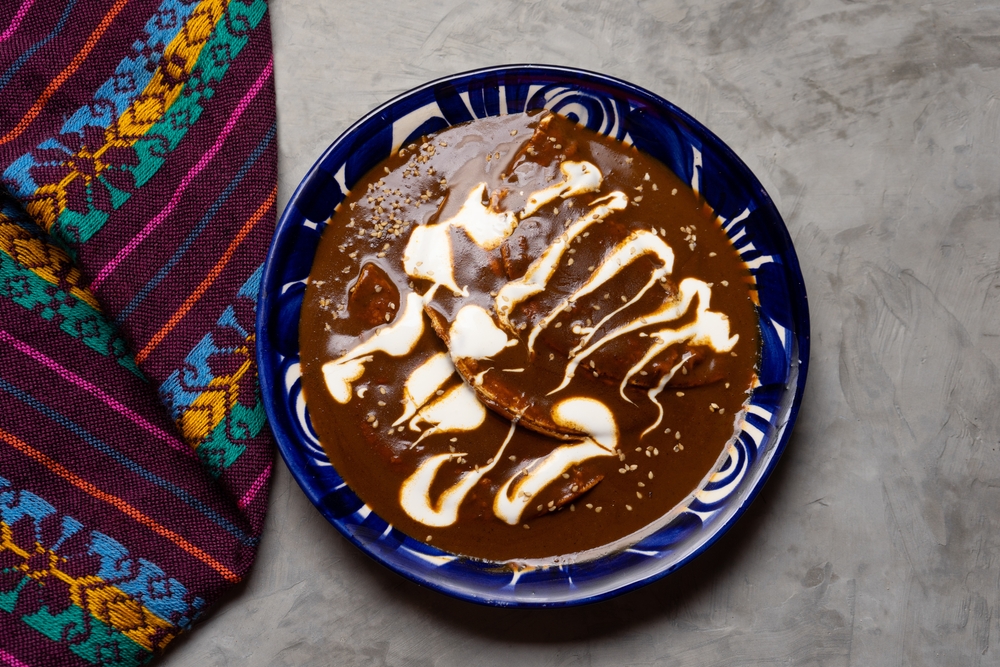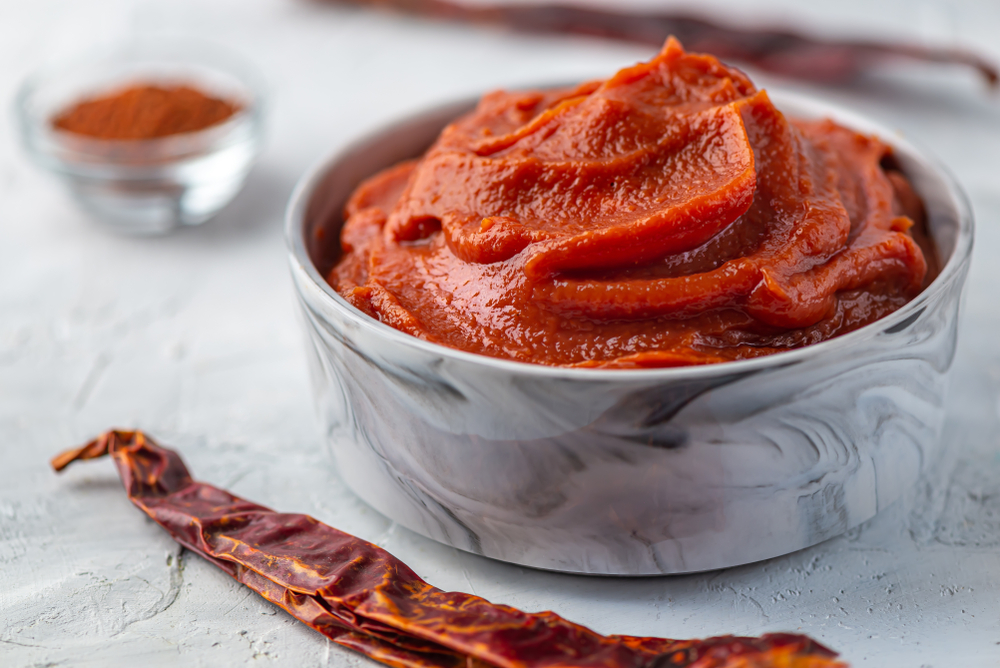Free digital copy
Get Speciality Food magazine delivered to your inbox FREE
Get your free copy
Over recent years, salted-caramel-flavoured anything has become ubiquitous in the UK, as the sweet and salty trend hit the mainstream. But is it about to be pushed from the top of the pole by the next big thing - ‘swicy’ food?
The rise of ‘swicy’, or sweet and spicy, flavours “plays nicely to the ongoing consumer movement towards more diverse, exciting taste experiences – experiences that often have roots in globally inspired cuisines,” says Tom Gatehouse, senior trends strategist at food consultants Egg Soldiers.
“Spicy food has become a lot more mainstream in Western culture,” adds Nina Matsunaga, chef patron of the Black Bull in Sedbergh, Cumbria. In the UK, the spicy food trend has become more and more popular as British consumers develop the confidence to explore warmer, hotter tastes. But for many, Nina adds, “getting used to spice is still quite hard.”
Now, sweet and spicy flavour combinations are diversifying how Brits understand spice. Swicy, Tom says, is “clearly an interesting proposition for heat-seekers,” but Nina says that balancing the spice with sweet makes it more broadly palatable: “It spices food up and makes it interesting, adding a new flavour profile.”
Dean Harper, chef and director at Harper Fine Dining, says the trend represents “an exciting deviation from traditional flavour combinations, granting consumers the best of both worlds”.
The recent interest in all things sweet and spicy was kick-started by a wave of hot honeys following the success of Mike’s Hot Honey, launched by Mike Kurtz in the US in 2010. Slowly but surely, the intriguing condiment trickled across the pond to Britain. This year, Waitrose even introduced hot honey chocolate chicks for Easter, a dark chocolate sweet treat with a honey and chilli caramel centre.
But despite the rush of new product development and trendsetter status in places like the UK and US, swicy can’t be described as novel – the flavour combination features in age-old cuisines from all over the world.
“Sweet and spicy food combinations aren’t new,” says Dominique Woolf, founder of The Woolf’s Kitchen and author. “They exist across numerous cuisines, from Thai sweet chilli sauce and its quintessential condiment nam prik pao, to Korean gochujang paste, Mexican hot chocolate and the Sichuan dish kung pao.”

“What we’re seeing,” adds Ben Ebbrell, chef and co-founder of Sorted Food, a YouTube channel that has become one of the biggest online food communities, “is a continued increase in global curiosity around food, the rise of street food vibes, and ‘market hall’ dining where multiple vendors surround a communal eating space.” While sweet-spicy combinations might seem unusual to UK tastes, they are far from unusual globally, he says.
Social media, Dominique says, has played a “huge part in bringing this trend to life, showcasing it to a new, adventurous audience. Thanks to the viral popularity of dishes like Korean fried chicken, which uses gochujang, Korean food and its sweet and spicy deliciousness have never been more popular.”
Mexican food, too, is seeing its moment in the spotlight in the UK, and it has many swicy combinations, from traditional Mexican mole, described by Michelle Rosser, co-founder and managing director of Pembrokeshire Chilli Farm, as “a complex sauce made with chilli and chocolate” to a sweet margarita spiced up by a kick of chilli salt on the rim.
Scott Joynston, product development manager at The Flava People, agrees that younger generations, like Gen Z and younger Millennials, are a significant driving force behind the swicy trend. “This generation has been instrumental in the innovation of new and exciting food trends as they are constantly seeking exciting and new flavour profiles to tantalise the taste buds.” And, he adds, with technology on their side, their access to food innovation is endless – “from blogs and e-books, to targeted ads and social media”.
As the younger generations tease out the trending flavours they’re interested in, these are seeping into the mainstream audience. “Today’s consumers are seeking more complex flavours from their foods, and this is where the sweet and spicy flavours come in,” Scott says. “It is driven by the consumer’s need to create a flavour combination that turns a forgettable meal into an excellent one.”
With spice-aligned food and drink continuing to “capture the imagination of consumers all over the world,” Tom says, “innovative condiment expressions” are “brilliantly showcasing the diverse flavour opportunities unlocked by increasing demand for the new.”
Indeed, many ways into the ‘swicy’ market are through condiments, and in a cost-of-living crisis when consumers are choosing to eat in rather than out, condiments offer a brilliant way to elevate home-cooked meals. “While what brings the flavour – sauces, spices, seasonings – is often not the most expensive part of the meal, it really can make the difference,” Scott says.
Sauces and condiments offer home cooks a quick ‘cheat’ for flavour. “Consumers are curious, but not everyone has the skill or experience to take a cuisine and run with it. What’s more, some cuisines require incredibly specialist techniques, or a long list of ingredients which people aren’t prepared to buy,” Scott continues. “The swicy flavouring can be incorporated into liquids, seasonings and sauces, all of which can be added to both food and drink, maximising its opportunity.”
But where to start? Tom says Korean cuisine in particular has benefitted from the “focused spotlight on swicy-centric possibilities,” with the stage firmly set for gochujang. “The sweet/spicy Korean condiment staple is now turning up in all manner of dish types and product settings, be it as a crisp seasoning, creamy pasta sauce addition, fried chicken glaze, ice cream enhancer, Korean BBQ seasoning, or even as an upgrade to hot honey,” Tom says.
“For example, WilderBee Gochujang Hot Honey made it into Harrods the summer of last year, and into the Co-op last October, with the product a blend of organic wildflower honey infused with fresh chillies and traditional fermented gochujang, adding a unique umami flavour profile and Korean-inspired depth,” he explains.

With BBQ season just around the corner, opportunities abound. “So many of the marinades you can buy for grilling, roasting and BBQing meats, for instance, are spicy versions of sweet and sticky sauces,” Ben says.
And don’t rule sweet-and-spicy flavours out for snacking. “Corn is naturally a sweet crop, but when puffed into popcorn it becomes a great vehicle for flavour. Some of the more artisanal flavours you can pick up include a sweet and salty combo with added spices and chilli,” Ben says.
From Thai chilli pastes to chilli jam chutneys, you may even have sweet and spicy combinations on your shelves already. To get these products flying into consumers’ baskets, try marketing the ‘swicy’ flavours as the latest trend to try and offering customers a few recipe ideas.
Is swicy food and drink a flash in the pan trend, or is it really worth more thought and investment from retailers?
“The phrase ‘swicy’ will probably fade out of popularity quite quickly,” Ben from Sorted Food believes. “The novelty of the portmanteau will wear off. However, the flavour combination has been around a while and is here to stay.”
One sign the flavour pairing is here for the long haul is its broad appeal, Tom says. “The point here is that it’s very versatile, not just in product scope but also as a taste profile among consumers. And I think that’s what really drives interest.”
Indeed, while choosing spice levels can quickly divide a room, sweet-spicy flavours offer something different. “Swicy is an interesting middle ground – not a direct compromise on the spicy flavour profile, unlike purposefully ‘mild’ options and tiny amounts chilli, but balanced with soothingly sweet notes,” Tom says.
“Swicy suggest the best of both worlds – a sweetened, complex release of heat,” he adds.
Tom believes further new product development is likely on the cards. “From here, we may start to see greater experimentation with the likes of jams, marmalades, molasses, and both agave and maple syrups, as innovators continue to further the case for swicy beyond hot honey.”
Michelle believes that demand will continue to grow – but in new areas. “Future directions may include the exploration of lesser-known sweet and spicy traditions from around the world, the development of sweet and spicy health foods that combine flavour with functional benefits, and the incorporation of sweet and spicy elements in plant-based cuisines,” she says.
For Ben, the countless examples from around the world that British chefs and makers can learn from is inspiring. “For instance tapping into cuisines and recipes like North African tagines (with harissa, honey, dried fruit and spice), Vietnamese dipping sauces (sugar, soy, fish sauce, chilli, garlic and fresh herbs), Latin American tajín fruit cups (a chilli lime salt sprinkled over fresh tropical fruits) or Indian chaat (fruits like pomegranate, tamarind and mango with hot masala spices, chilli and yoghurt). They all demonstrate the versatility of this sweet and spicy combination,” he says.
Nina points to growing influences from Thai, Indian, Mexican and Brazilian cuisine in the UK, and going forward she expects these flavours to become “less subtle in the process to becoming a more ‘normal’ rather than being one off unusual ingredients”.
“Whether it’s richer access to recipes online, more food-based content on social media or a wealth of global ingredients available to buy online with next day delivery (or even get delivered to our door ready to eat),” Ben says, “the world is now our oyster, and we’re adopting more of these well-established combinations ourselves.”